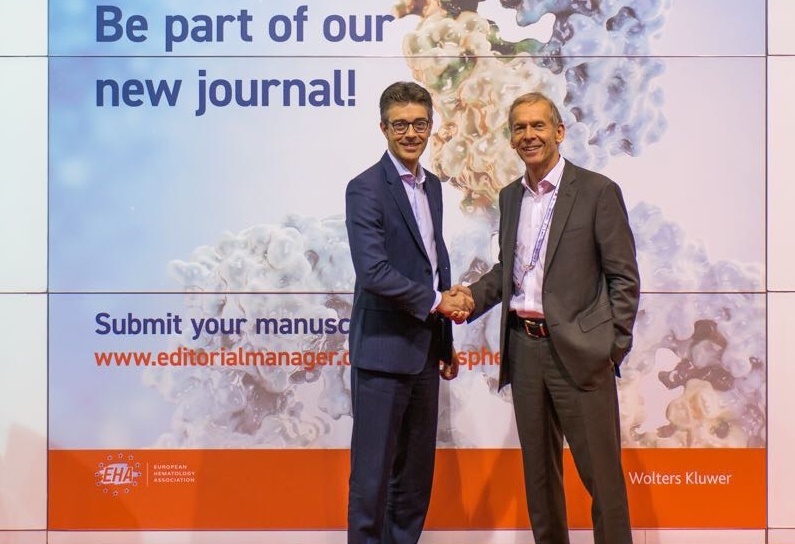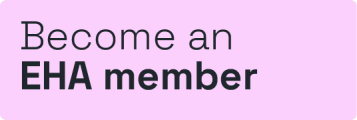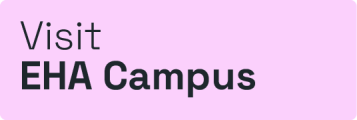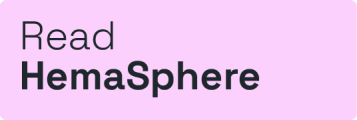Enabling the spread of good research – a day in the life of an Editor-in-Chief

Most conversations with the Editor of a scientific journal usually revolve around the acceptance (hooray!) or rejection (oh no!) of our research work. But do you know what else the job of an editor entails? YoungEHA has spoken with Dr. Jan Cools and Dr. Andreas Engert, the Editors-in-Chief of HemaSphere, to learn more about the world of scientific publishing – hear how they became editors themselves, what being an editor really means, and what a colleague considering a career in scientific publishing should know.
Fabienne Lucas, on behalf of YoungEHA: Jan and Andreas, thank you both so much for talking with us. You both wear so many hats – today let me ask you some questions as the Editors of HemaSphere, The Official Journal of the European Hematology Association. How did you become an editor?
Jan Cools: Very happy to be here! How I became an editor? Serendipity: I was a young group leader and focusing on my research, not thinking about doing editorial work at all. I was asked by EHA to become an associate-editor for Haematologica. It seemed an interesting addition and extension to my research so I accepted, thinking that this would only be for a few years… Now, many years later, I am still an editor in addition to my research work, and I still enjoy it a lot!
Andreas Engert: I have been working with EHA for several years. During my term with EHA, one of my projects was the EHA Roadmap for European Hematology Research. This comprehensive project included several projects on important questions for European research. I was also involved in the discussion on the new EHA journal. To this end, I was involved in the team that developed an alternative to Haematologica. This new journal was created during an EHA brainstorming in spring 2017.
Fabienne: Can you tell us a bit more about what an editor does?
Jan: The task of an editor is to attract interesting manuscripts and to select the best articles for publication. In addition, it also involves providing support to authors to get their work published: sometimes authors have very nice and interesting data, but do not present it well or write a confusing article. Together with the reviewers, editors can provide constructive feedback to the authors to improve their paper. It is not enough to have good data, authors also need to present a clear story with high quality figures. Together with the EHA Board we are also thinking about further developments for the journal to make it a strong hematology journal that is there for the benefit of the hematology field.
Fabienne: How many hours per week do you spend on editor duties?
Jan: Too many…I should be in the gym more.
Andreas: I spend about 8 hours a week on HemaSphere.
Fabienne: How do you balance this with your other commitments?
Jan: I have always been able to balance this well with my research lab and family life. I do work almost every day for a short (or long) time for the journal, and I cannot take a long vacation without checking the work for the journal nearly every day, but I have no problems with that. I have also learned to work effectively and to use all possible free time. But life is also about making choices: I realize very well that doing this editorial work prevents me from accepting other tasks; saying ‘no’ to other invitations is important otherwise it would get too much.
Andreas: I cut down a bit on some of my other commitments in order to free enough time for HemaSphere.
Fabienne: Publishing a journal involves team work. Who is in your team and what do they do?
Jan: As editors-in-chief we oversee the entire editorial process. Andreas and I work together with a group of very talented associate-editors and scientific-editors, all experts in their field, and all active hematologists/researchers. The associate editors are responsible for the review process: they select the reviewers and they take the decisions to reject, ask for revisions or accept a manuscript. Andreas and I provide suggestions and make sure that all associate-editors use the same selection criteria. We also have great editorial coordinators at EHA and Wolters-Kluwer who handle the website, the submission process, the reviewer database, etc. It is a very good team who are all working to support the authors, the reviewers and the readers of the journal.
Andreas: I agree, our main partners are the publisher, Wolters Kluwer, as well as the EHA central office and a team of associate editors. Jan and I mostly search for interesting topics in the field of hematology, with the support of these different teams.
Fabienne: Would you recommend being an editor or working in publishing as a career path?
Jan: Definitely, but it is not a free lunch! If you work as a scientist and like to do editorial work in addition, it requires dedication to both activities. Some days can be hectic if both jobs require your full attention at the same time… It is also possible to become a professional editor, not being directly involved in research anymore, and be 100% focused on editing and publishing. I can see that this can be an interesting career path for those with very good writing skills and a strong interest in publishing. However, I think that it is a major advantage for HemaSphere to have editors who are also active in hematology research and clinical care, since they know the field better.
Andreas: For now, I have a number of duties that would not allow me to completely switch to the publishing business. My major scientific focus is leading the clinical research on Hodgkin lymphoma. Our group, the GHSG is the world leading scientific group in this field. We do basic research such as developing tests for minimal residual disease in Hodgkin lymphoma. The major focus, however, is to develop new clinical approaches for the treatment of patients with Hodgkin lymphoma.
Fabienne: What advice would you give junior hematology physicians/scientists who are considering becoming journal editors?
Jan: It is important to do a lot of reviewing and to write articles (including editorials and review articles) for various journals. In this way, you can get familiar with these processes as well as with various journal submission systems. Also, having a good understanding of how high quality figures are made and how to deal with resolution of images and other technical knowledge about images can be very helpful later.
Andreas: As a junior hematologist, I think it is better to follow the clinical path. You can still switch to the editorial business later on.
Fabienne: What are your thoughts on print versus online publishing, and the role of social media in promoting journal content?
Jan: It is so easy now to read articles on a laptop or tablet, so printing is not needed anymore.
This way, we can save a lot of trees and reduce CO 2 levels (from not shipping printed journals). Let us all do as much as possible to go for a green and sustainable solution. It is great to use social media to promote journal content, and I should use that more often.
Andreas: In addition, online publishing is extremely interesting because it allows a more rapid turnover from the idea to the final print.
Fabienne: HemaSphere is an open access journal and allows free article submission. How do you feel this contributes to the journal’s activity?
Jan: All journals should be open access – why not? The results of research should always be available to all other researchers. Only this way can research advance as fast as possible. It is also not logic that one needs to pay for article submission. I am very proud that HemaSphere is a fully open access journal with very low publication fees - that is how all journals should be!
Fabienne: Finally, HemaSphere has just had its first birthday. If you had to pick one, what would you say was the highlight of the year for the journal?
Jan: The highlight of 2019 would be that the journal will be visible in PubMed searches: it always takes some time for a new journal to be indexed, and it seems that this will come soon
now for HemaSphere.
Andreas: The highlight of the year for HemaSphere’s first birthday is clearly the successful launch of this thrilling new journal.
Fabienne: Thank you very much!



 Back
Back